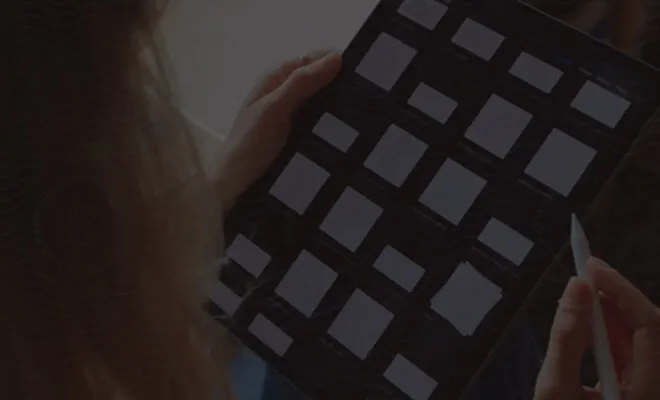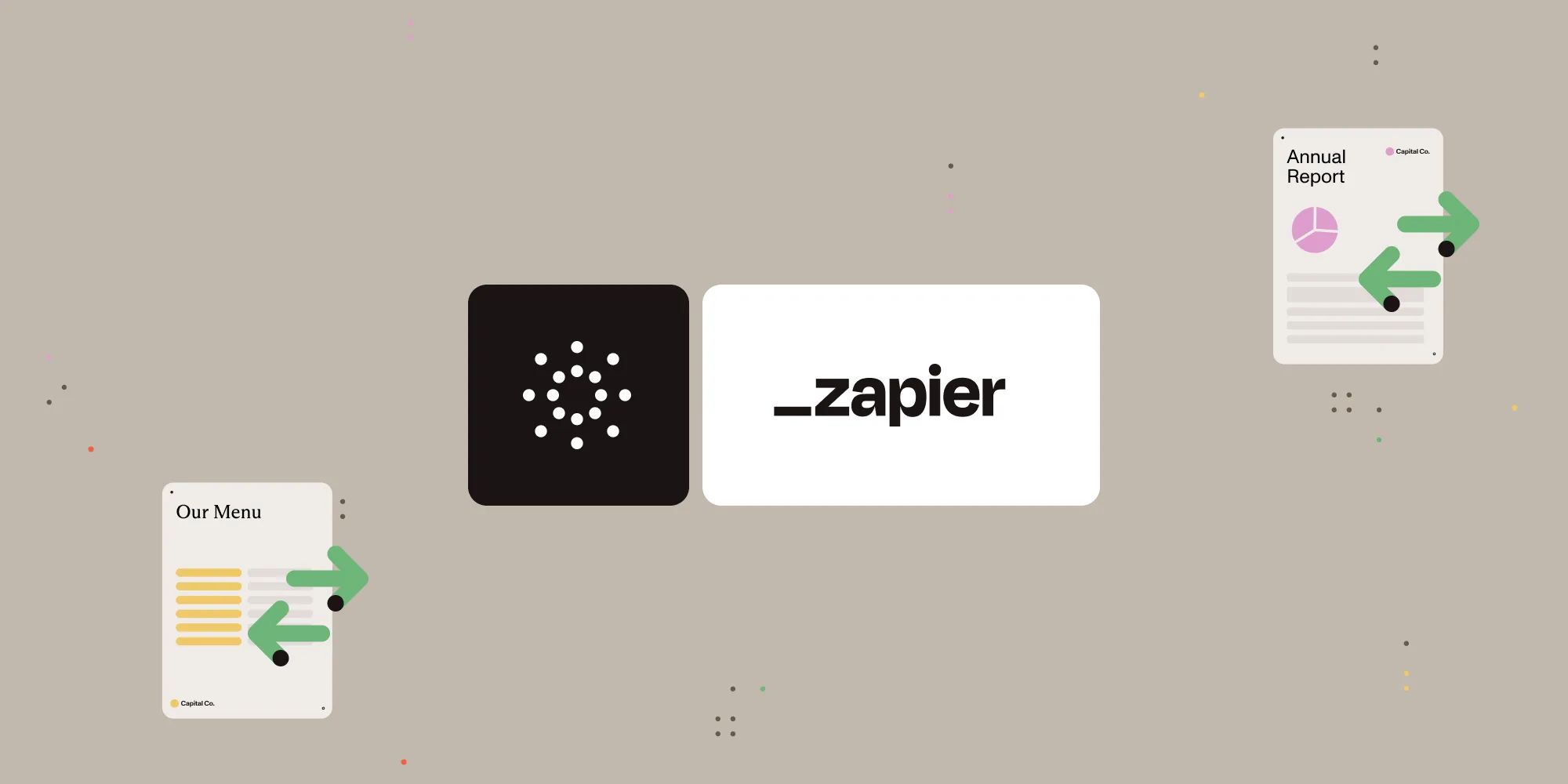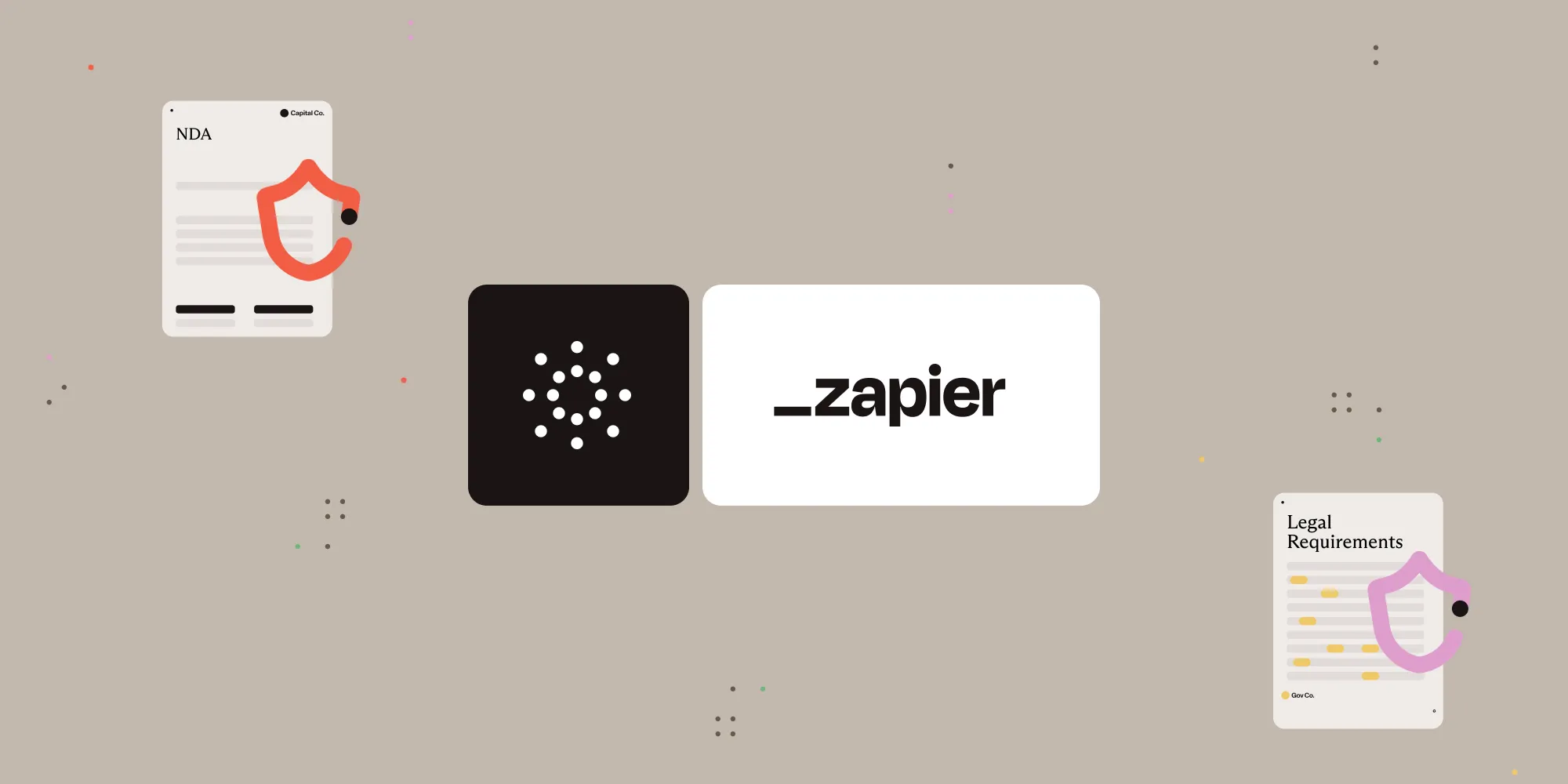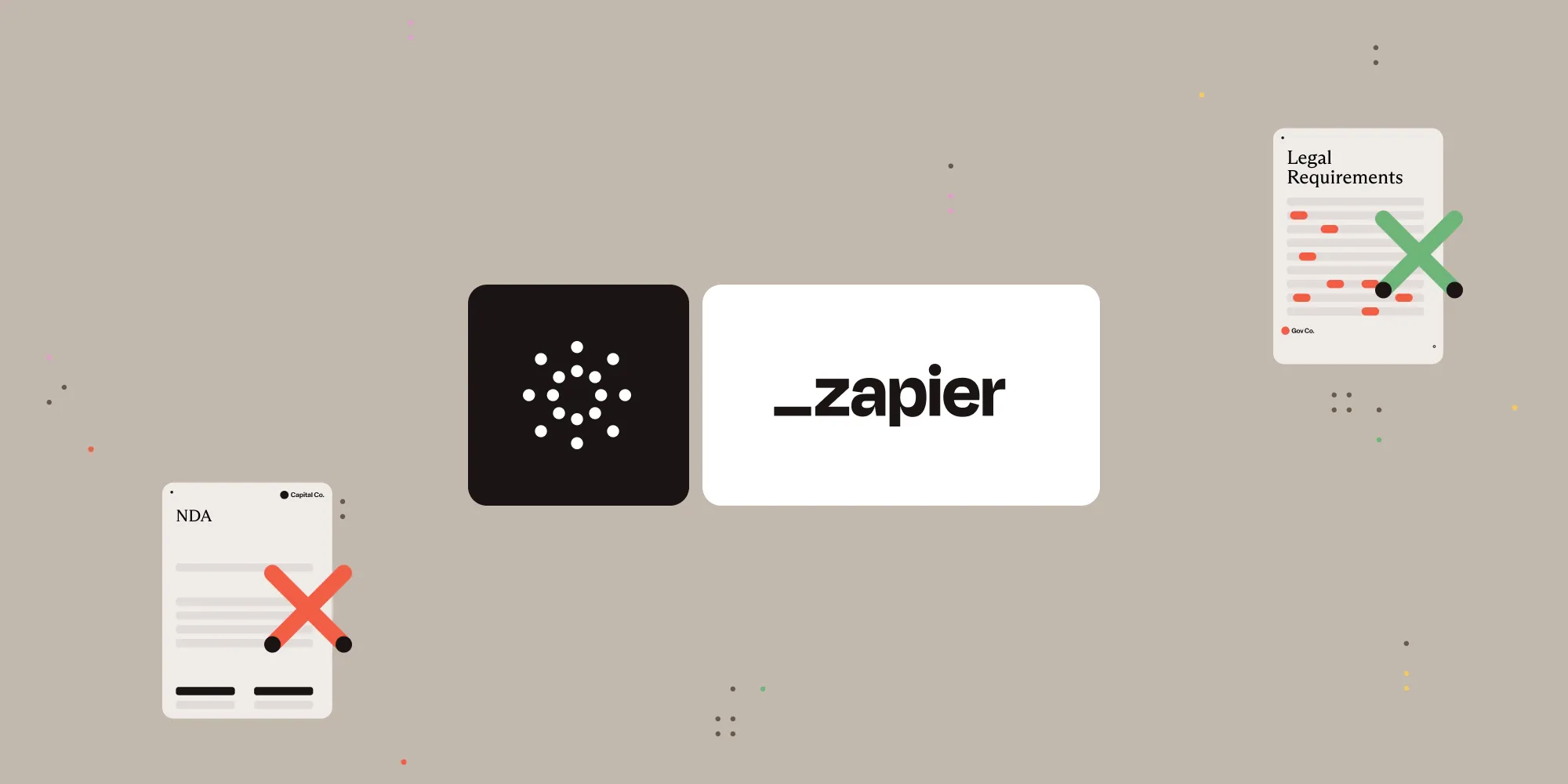Cryptographically sign PDFs with Nutrient Document Web Services API on Zapier
Table of contents
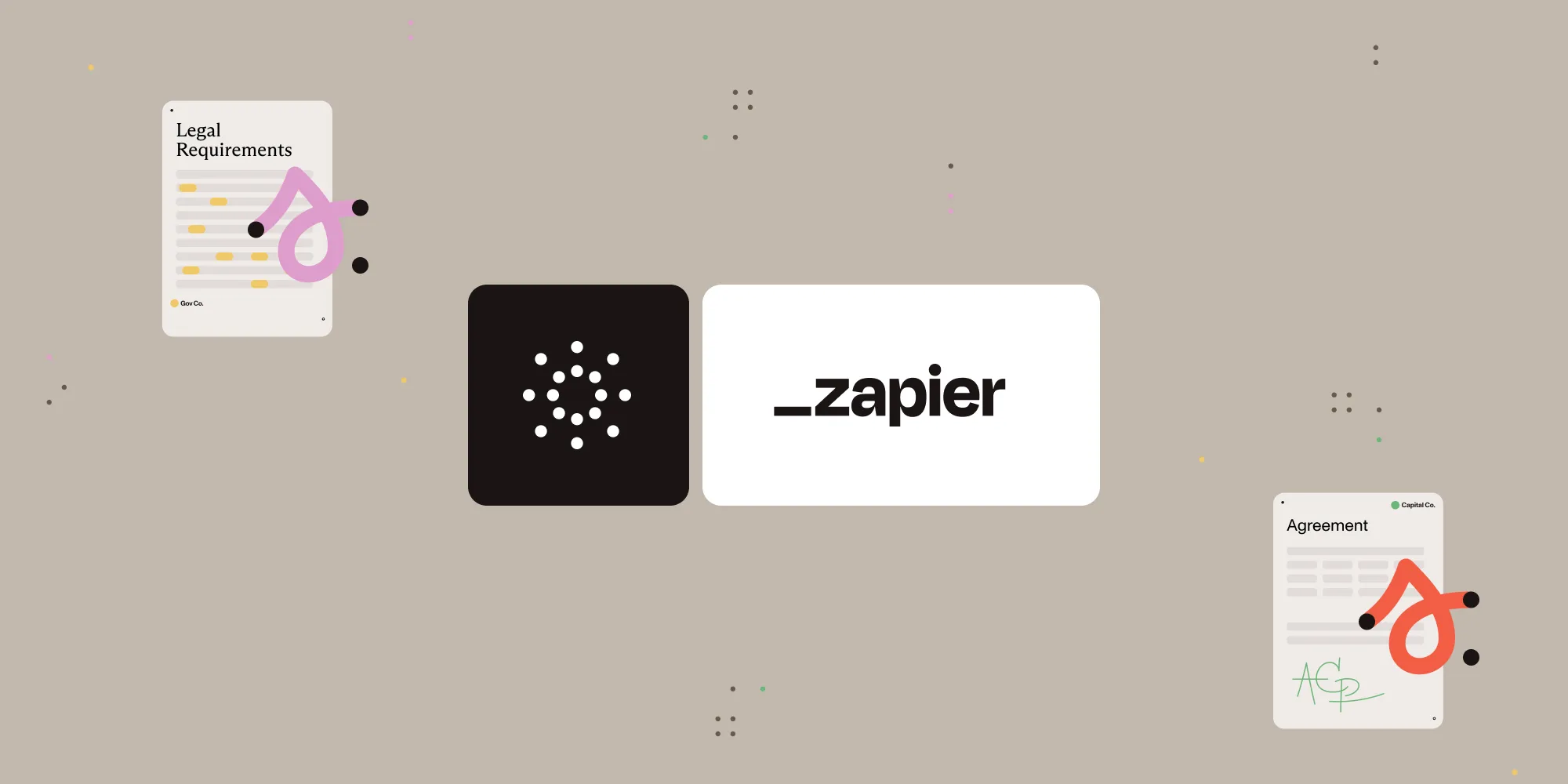
What is Zapier?
Zapier(opens in a new tab) is a no-code automation platform that connects your favorite apps and services. You can build workflows — called Zaps — that automate repetitive document handling tasks, like uploading, converting, or signing PDFs.
What is Nutrient DWS Processor API?
Nutrient Document Web Services API is a powerful platform for document automation. With your free account(opens in a new tab), you get 200 credits, which you can use to perform various document operations. Each tool (e.g. conversion, signing, flattening) consumes a different amount of credits depending on complexity.
Nutrient offers more than 30 tools with the ability to:
- Convert images and documents to PDF
- Merge, split, or reorder pages
- Add digital signatures, watermarks, or annotations
- Run OCR, redact, flatten, and more
What you’ll need
- A Zapier(opens in a new tab) account (a pro plan is necessary for multi-step Zaps)
- A Google Drive account
- A Nutrient DWS Processor API key — sign up here(opens in a new tab)
- A PDF file in a Google Drive folder
Step 1 — Trigger a new file in a Google Drive folder
- Select Google Drive as the trigger app.
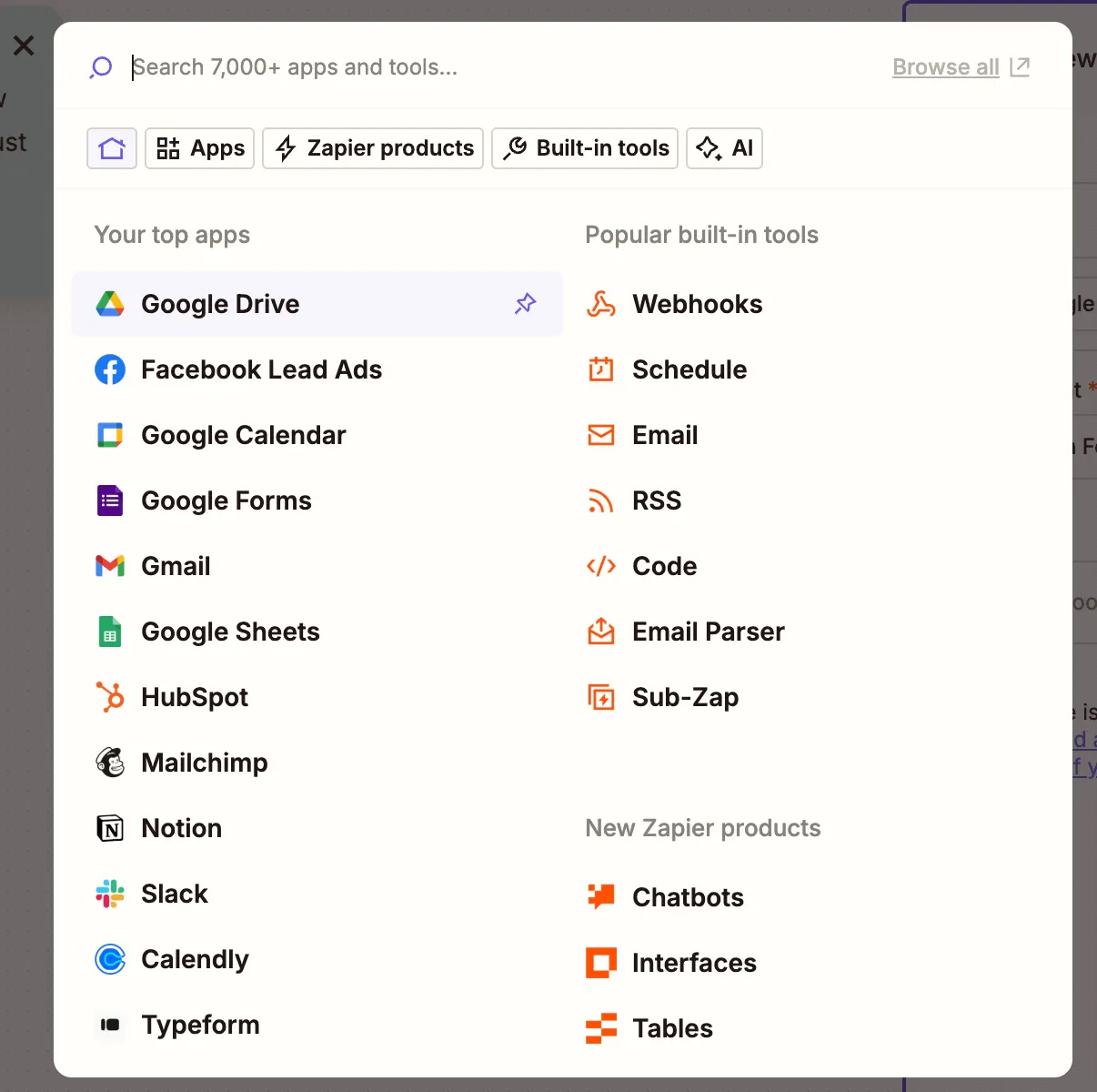
- Choose the New File in Folder trigger event.
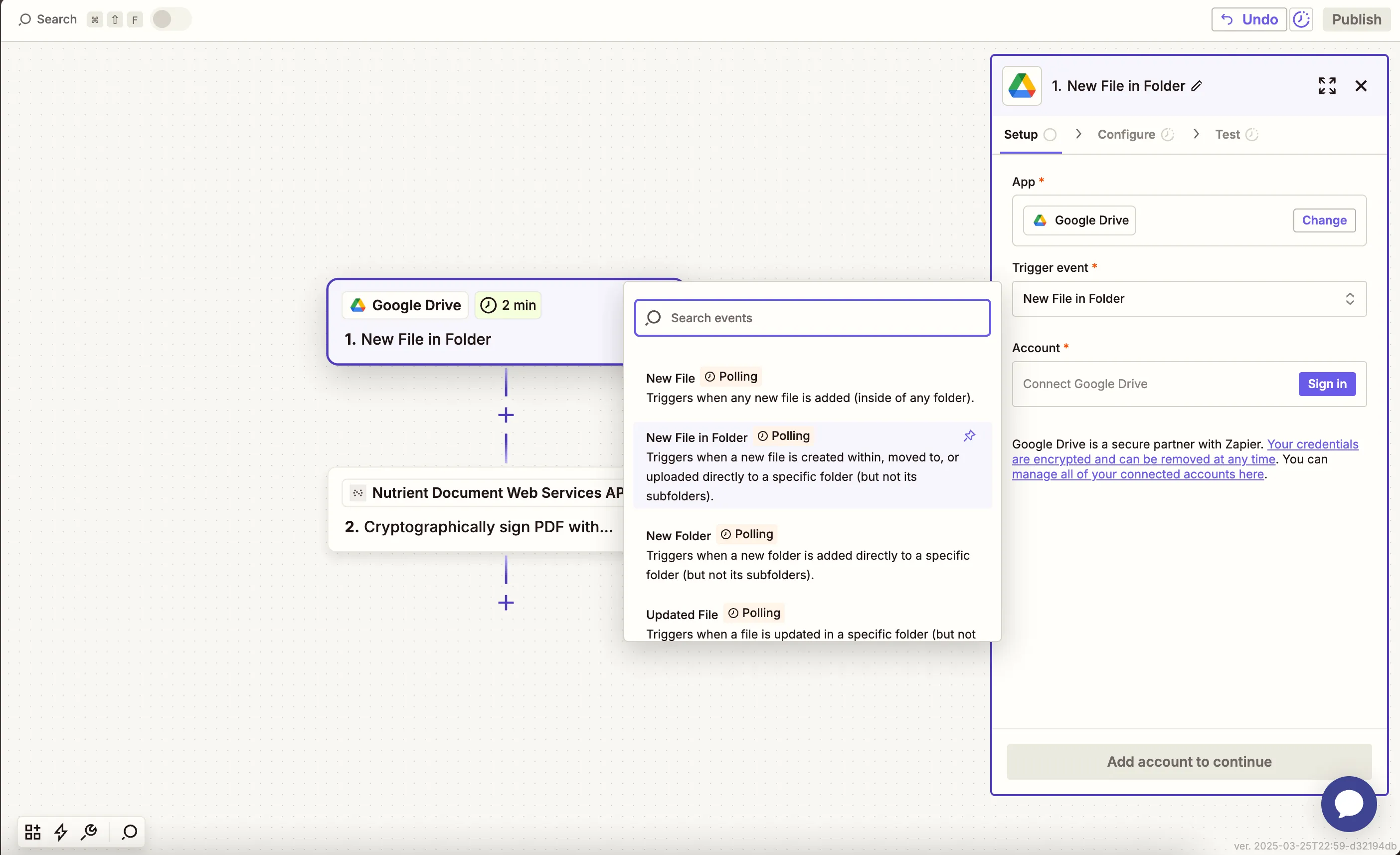
- Connect your Google Drive account.
- Configure the folder you want to watch (e.g.
pdf-signing-inbox):
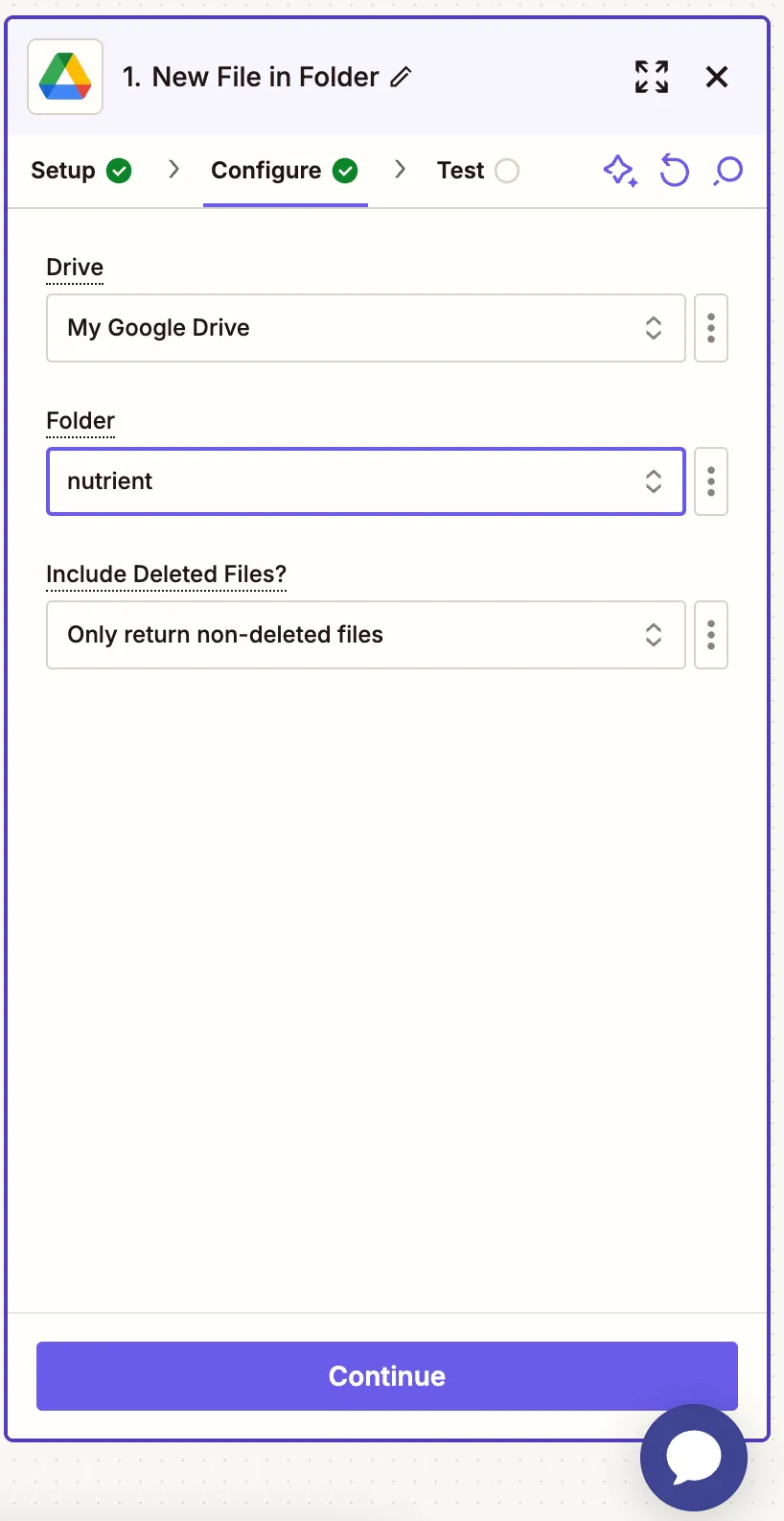
- Test the trigger with a sample PDF file.
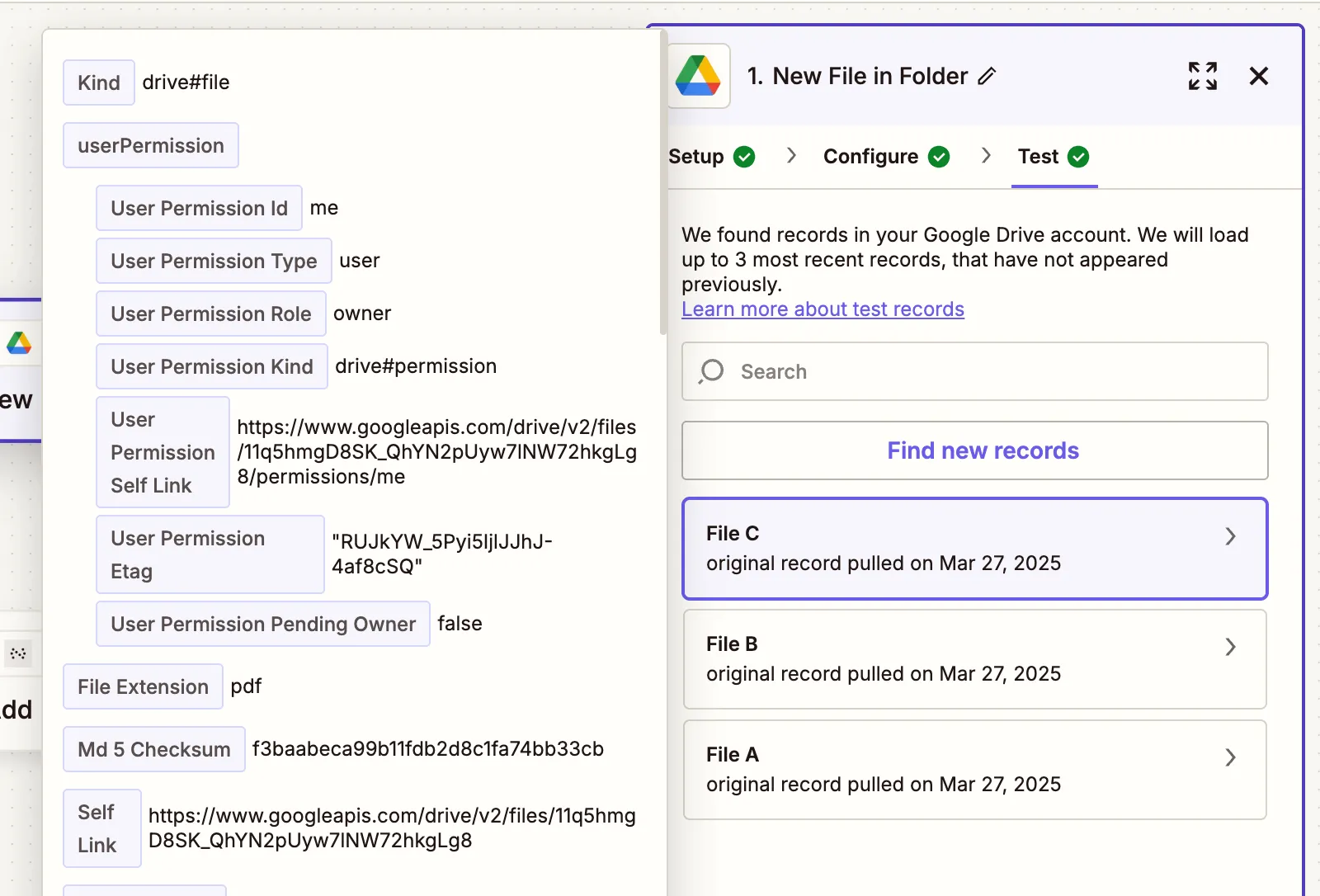
Step 2 — Cryptographically sign the PDF action (Nutrient DWS Processor API)
- Select Nutrient Document Web Services API as the action app.
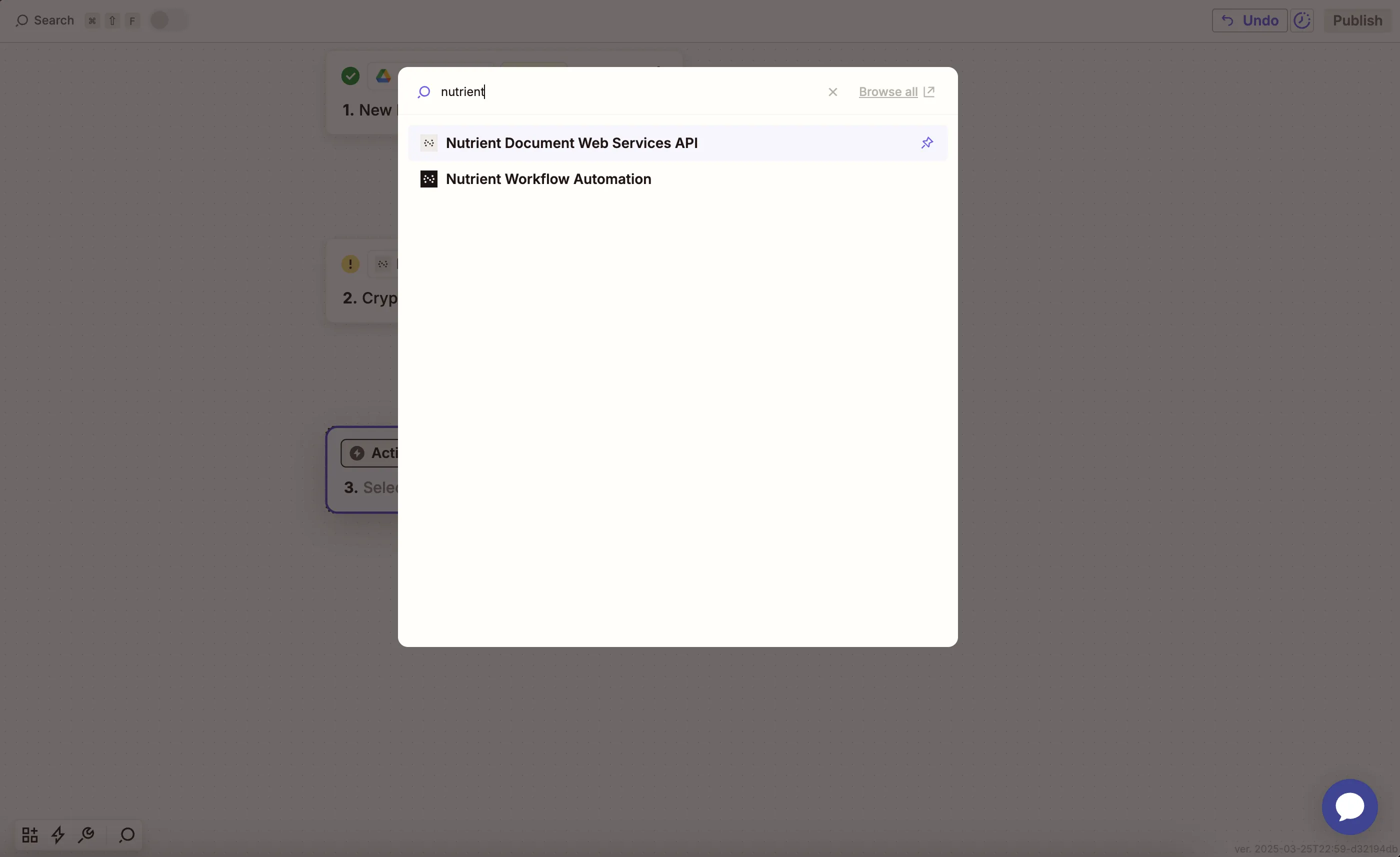
- Choose the Cryptographically Sign PDF With Invisible Digital Seal action.
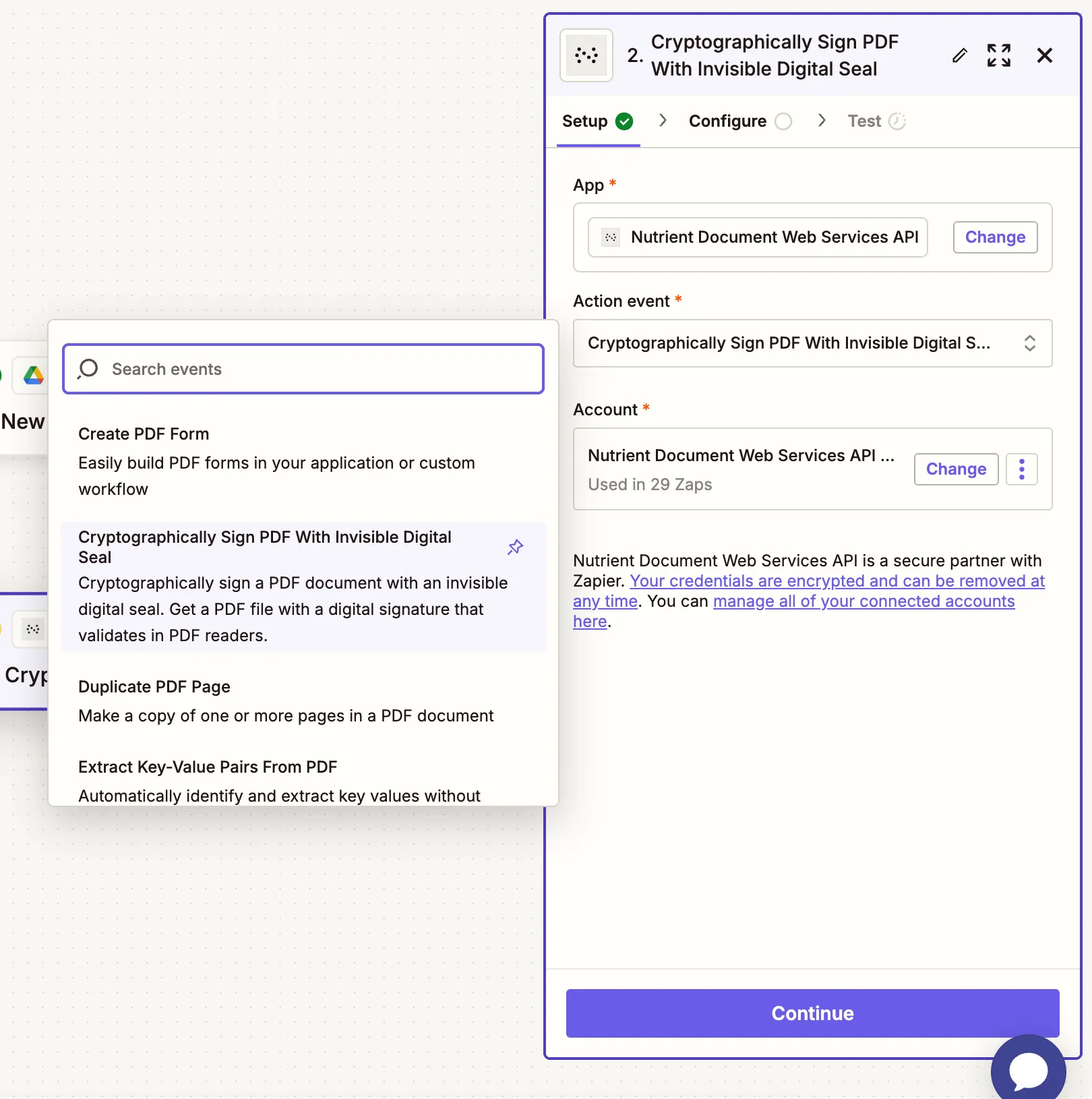
- Connect your Nutrient account using your API key.
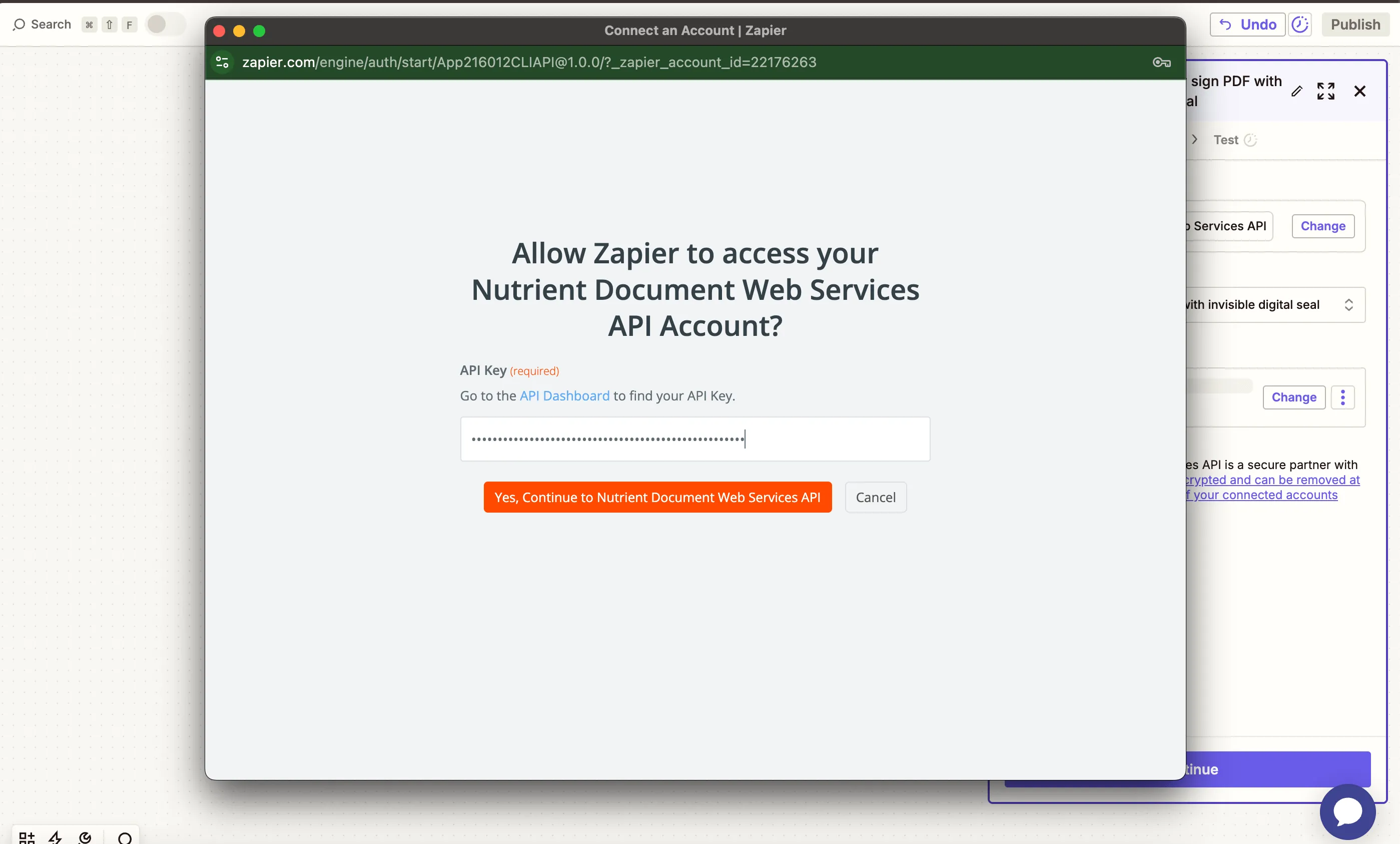
You can find your key in the Nutrient dashboard(opens in a new tab).
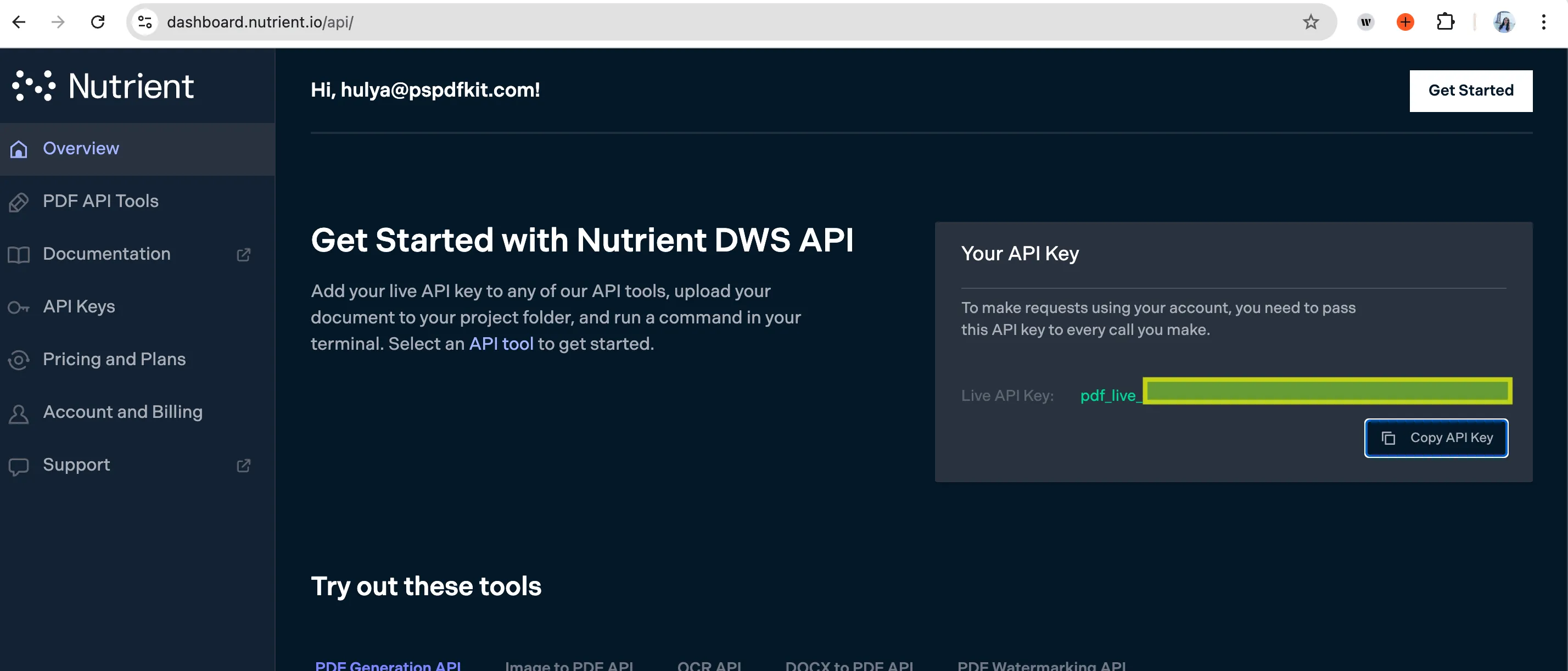
- Fill out the configuration:
- PDF File URL — From step 1 (Google Drive trigger).
- Output File Name — Optional (e.g.
signed_contract.pdf).
This action uses a CAdES digital signature that’s invisible to the viewer but validates in standard PDF readers like Adobe Acrobat.
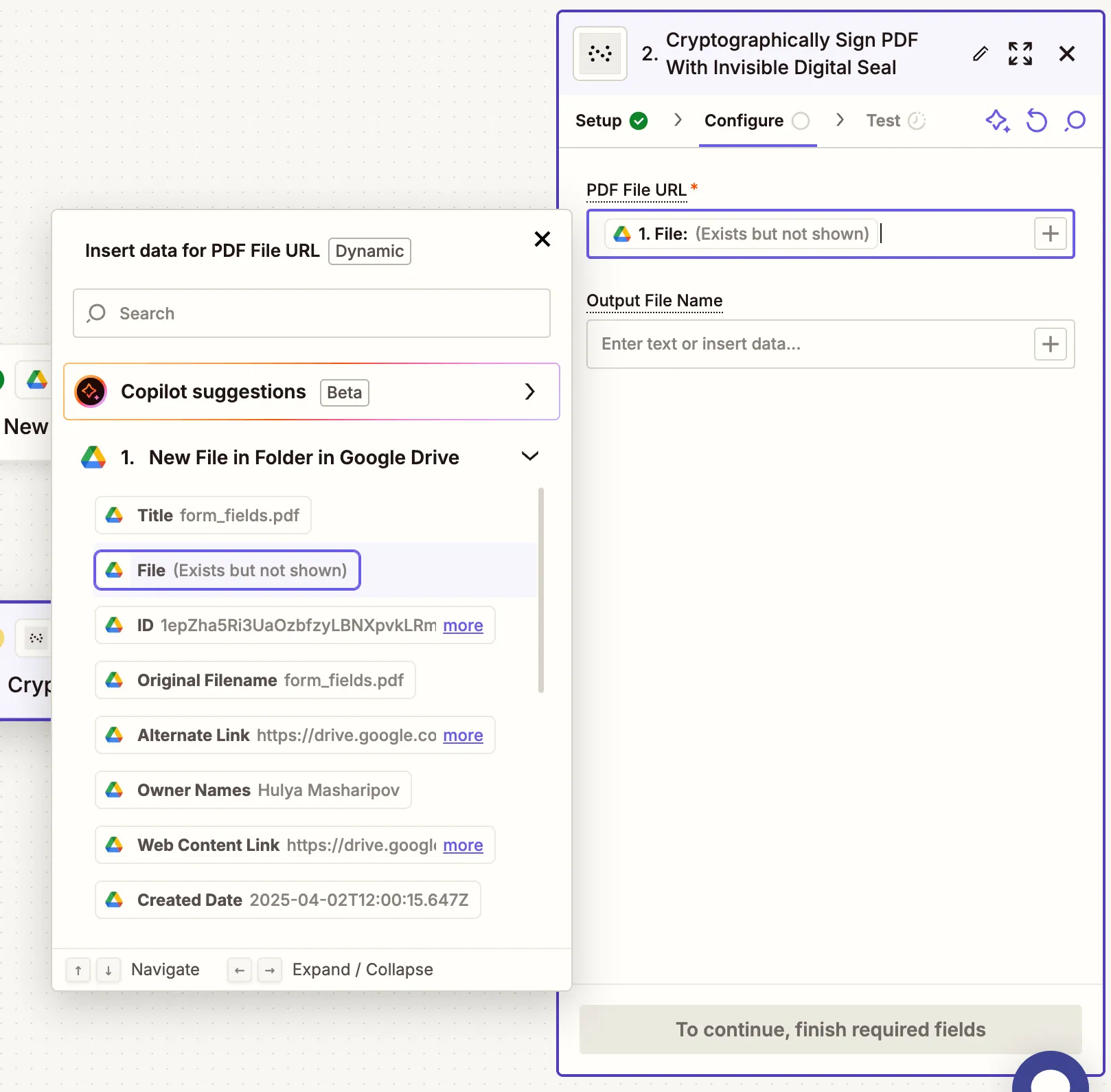
- Test the step to verify successful signing.
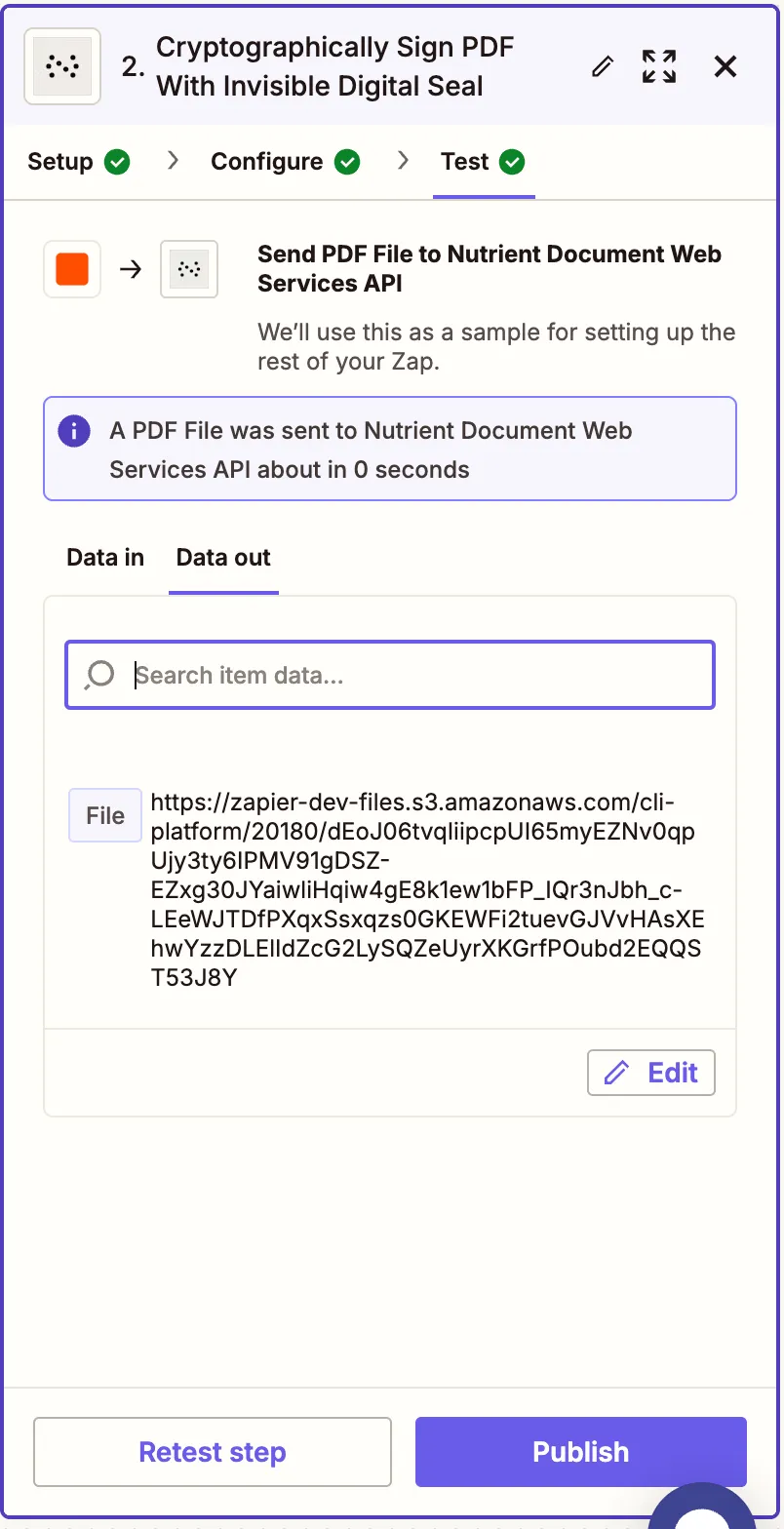
Step 3 — Upload the signed PDF to Google Drive
- Add another step and select Google Drive again. Choose Upload File as the action event.
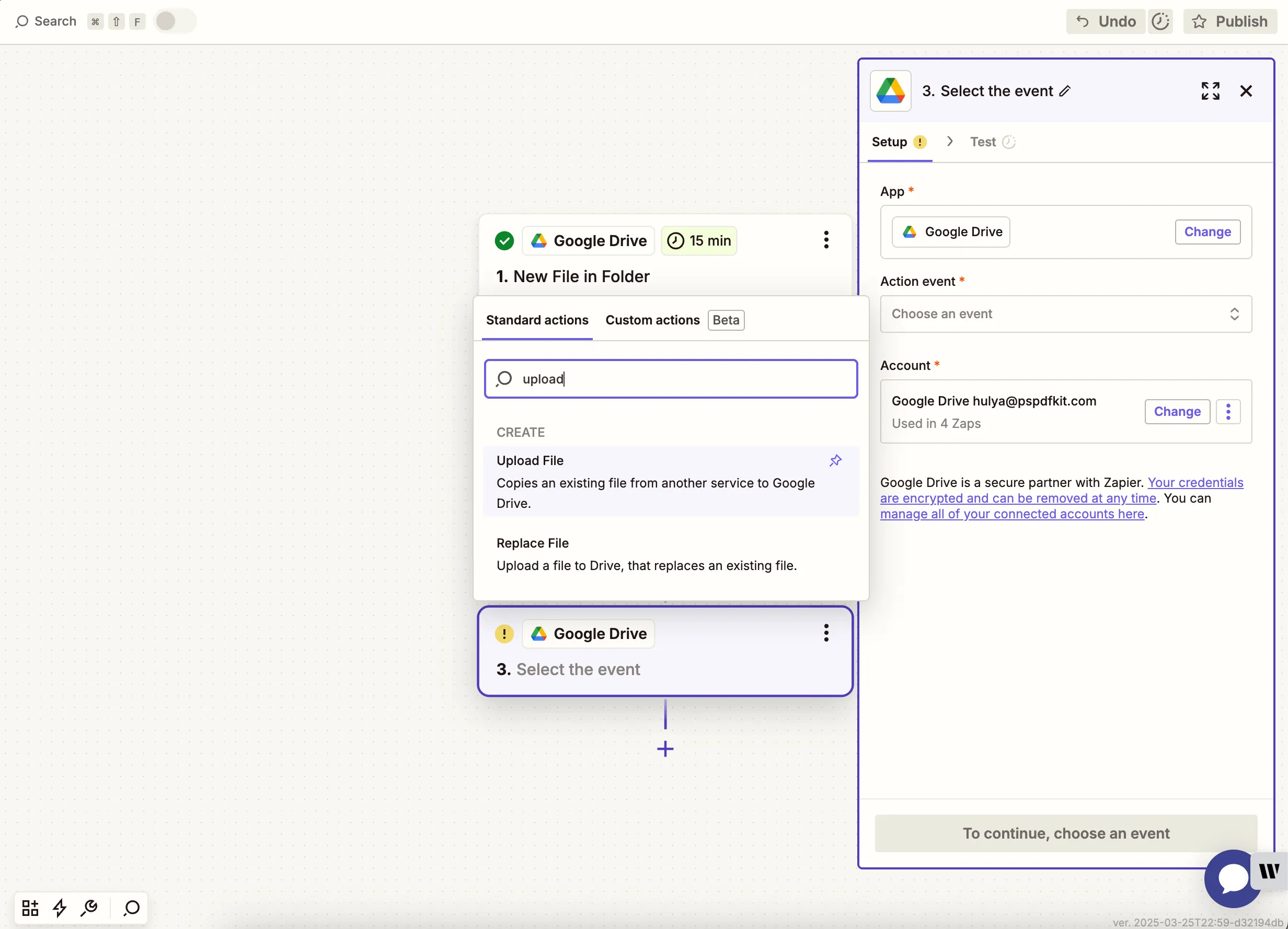
- Map the file from the Nutrient DWS Processor API step to the File field. Select a folder like
pdf-signing-outputas the destination.
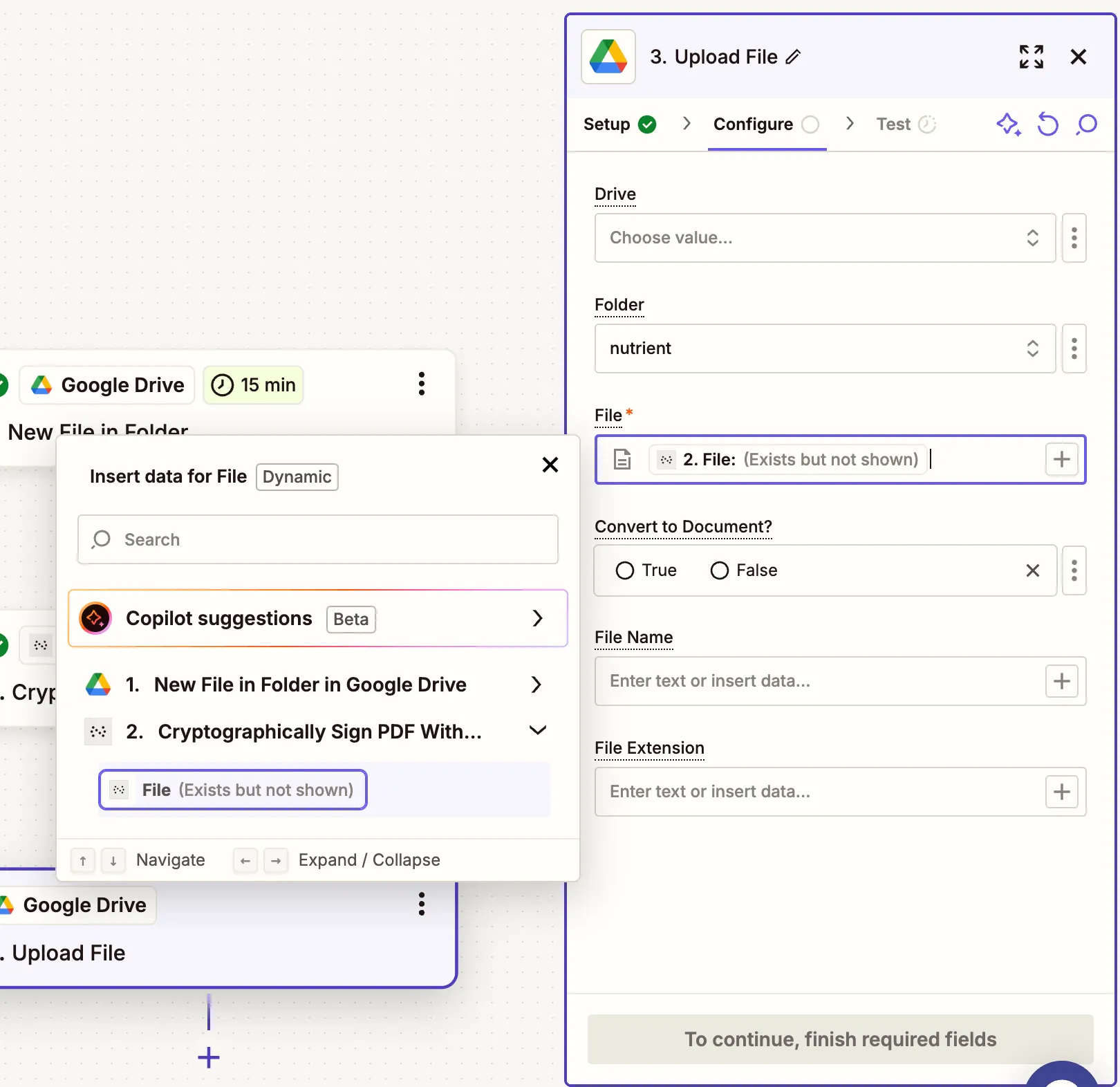
If you’re using the same folder for input and output, Zapier may show a loop warning. Avoid this by selecting a different upload folder.
- Test the upload to confirm it works.
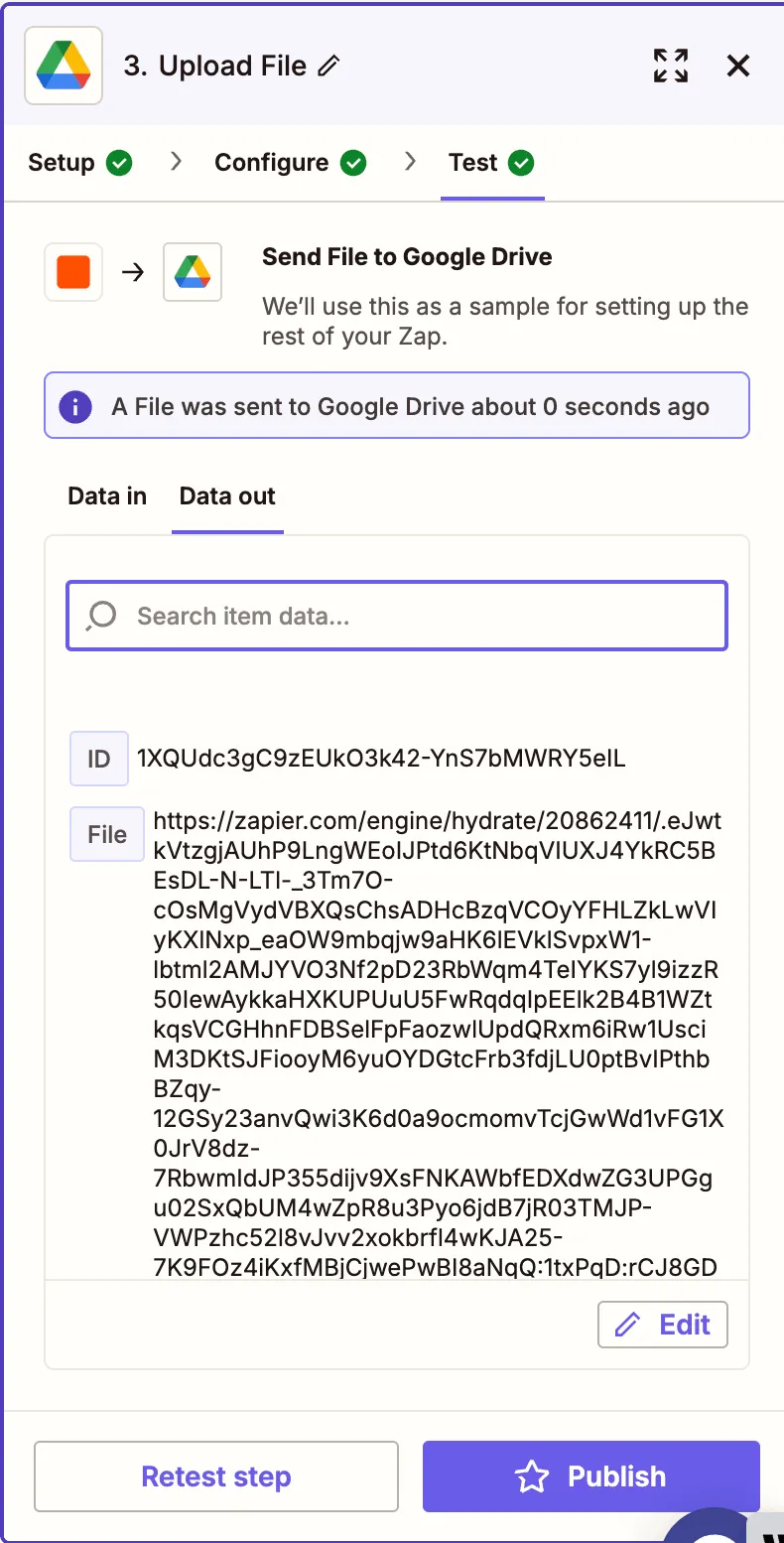
Conclusion
With this Zap, you’ve automated the cryptographic signing of PDF documents(opens in a new tab) using an invisible seal that can be verified by any standards-compliant PDF reader. This is perfect for workflows requiring proof of authenticity, non-repudiation, or internal compliance.
You can expand this workflow with additional steps for redaction, PDF/A conversion, or key-value pair extraction.




